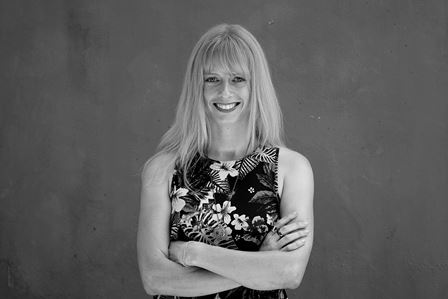Sara Kidd.
IF talks to Indievillage’s head of acquisitions and digital media Sara Kidd about smart outreach, the importance of building an audience early and investing in an effective distribution model.
How did Indievillage begin?
I was working with Second Nature Films’ Kate Clere and Michael McIntyre, who have been around for 14 years making documentaries. I was fresh out of film school and I came on board in 2012 to help them distribute their documentary Yogawoman, starting in the States and then around the world. We had a really strong understanding of how the audience worked and we knew all the key influencers in the Yoga world in the States. So we self-distributed and created this amazing model of how to build audiences, and then people just started talking to us about what we'd done. Our goal is really to help filmmakers through the maze of distribution and make sure that they're getting the best deals possible for their product. And making sure their product is as saleable as it can be. What we've found is that a lot of films just aren't getting the exposure that they deserve and filmmakers are just selling all their rights and have no idea how to get their film out there when they're finished. So we come along and we help them build audiences and negotiate all the deals with the distributors. Or we can do the distribution. I do all the marketing and branding, I help them build communities.
Does it differ much between projects?
Absolutely. The earlier I can come on board the better. And then while they're shooting their film I can say: 'Hey, while you're out there today shooting Sydney Harbour Bridge, make sure you get a shot of the director talking about the day so we can use it as digital’. Filmmakers don't realise that the key time to start building your audience is whilst you are making the film. Because the audience gets to become a part of the creative process and they'll help promote it once it's finished. We also try to make filmmakers understand that you have to spend money to make it happen. You need at least $50,000 to start and it should be included in the production budget. Yes it costs money, but if you invest your product has a much better chance to make [its] money back. My biggest thing is not just about the film but creating a personal brand for the filmmaker to create a sustainable long-term career. Because you know how we hear about filmmakers who make one feature in Australia and then that's it. I want to create a platform for the filmmaker to establish themselves so they can continue to make product and have an audience there ready to watch it.
Is it just the three of you?
There’s the three co-founders but then I have a team of about twenty people that I work with. Mainly freelancers. I have a production manager [Lisa Eismen] and an accountant [Matthew Carter] who works in-house with me. I have two designers. I have such a massive group of freelances because it depends on their speciality. I might use one designer for one project and another one for a different project because I know their particular skill set.
Has it become easier over the last few years to convince people to invest in distribution?
No (laughs). It's hard but then I'd say something like: ‘you can spend $38,000 on one billboard in Sydney – right? Or you can give me $38,000 and I'll put your film in twenty cinemas and we [can] use that as an advertisement for your V.O.D. release, which is where you're going to make the main revenue’. And when I start talking in those terms it becomes a lot easier to see. We target the audience: we understand who they are, where they are, what they're buying, what platforms they’re on, what brands they are associated with, how they communicate with each other.
Without giving away your secrets – any tips for producers?
The first would have to be [to fine-tune] the branding: the poster, the website, [the] social media presence. Making sure that any artwork that they create is targeting their audience, which goes back to understanding who their key audience is. When we made Yogawoman, we knew that 8 million women in the world did yoga. We knew that in the States, the women that did yoga who were over thirty had a disposable income and would buy a film. So we immediately knew there was a huge audience for that.
How do you see distribution changing over the next couple of years?
Well obviously all the windows are collapsing. With the film I'm doing at the moment, we're using the theatrical [run] as an advertising campaign because we're releasing day-and-date. As soon as it's in the cinema, it's on iTunes. I think everything is going towards either virtual reality or mobile phones. So one big lesson I teach all filmmakers is to make sure all their content looks good on mobile phones…


